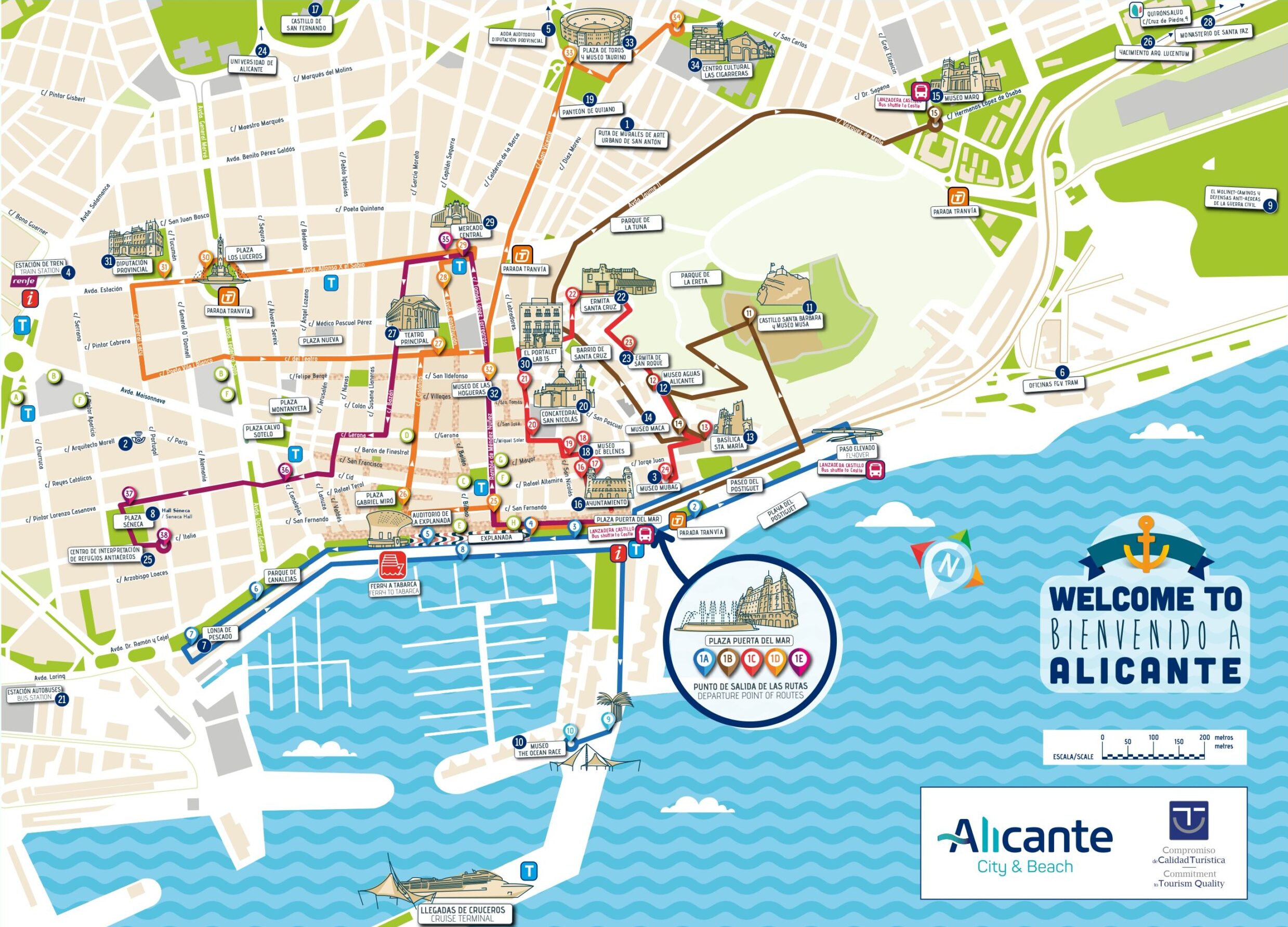ROUTE:
5.24 km
DURATION:
2 hours 30 minutes
DIFFICULTY:
Easy
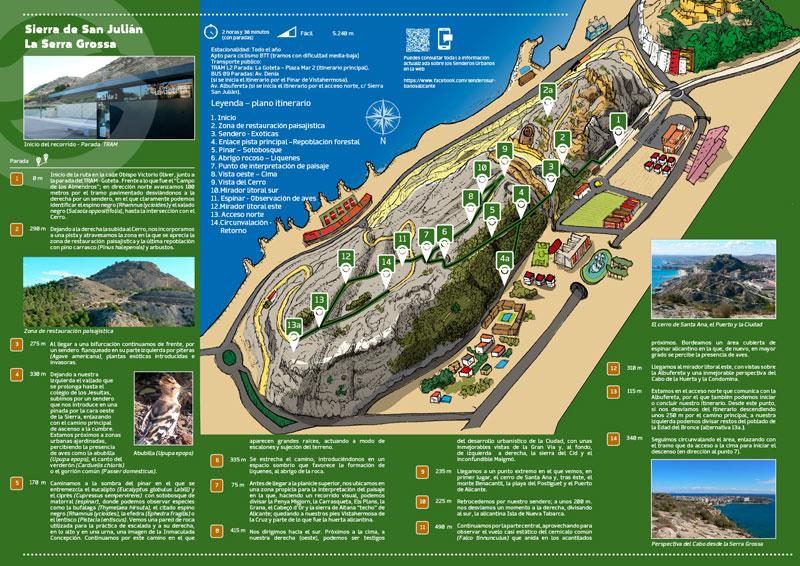
A mountain range facing the sea
Located facing the sea, at the north entrance to the city of Alicante, the Sierra de San Julian or Serra Grossa covers an area exceeding 80 hectares, framed within a perimeter of 5 kilometers. This geographical-environmental landmark, used by humans since Prehistory and decisive in the development of the City, is currently conceived as an urban forest park where forest repopulation and landscape restoration works are carried out to promote its use as a natural space.
In the Serra Grossa there is an excellent representation of the main plant communities typical of the mediterranean coast. One of the most important is the Alicante thorn scrub, composed of the dwarf fan palm (Chamaerops humilis), the black hawthorn (Rhamnus lycioides) or the Osyris (Osyris lanceolata), among others, as well as all their stages of succession. On the sunniest slopes appear the esparto grasslands of common esparto (Stipa tenacissima) and albardine (Lygeum spartum), an interesting community very well adapted to the harsh conditions of drought and strong sun exposure that prevail in these habitats. The more open and flat areas are occupied by thyme scrublands of the genera Thymus sp. and Teucrium sp. and by grasslands of grasses, fennel (Foeniculum vulgare) and different species of thistles. We can also observe typical plants of rocky outcrops, such as the rock pennyroyal (Teucrium buxifolium subsp. rivasii ), the cats claw (Sedum sediforme) or the caper bush (Capparis spinosa).
Trail Stops
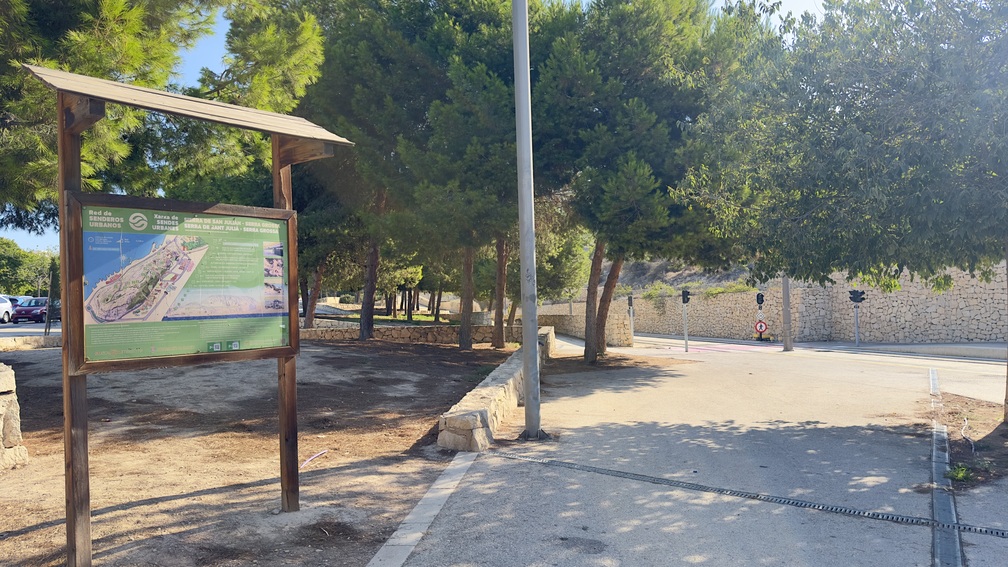
1. Start
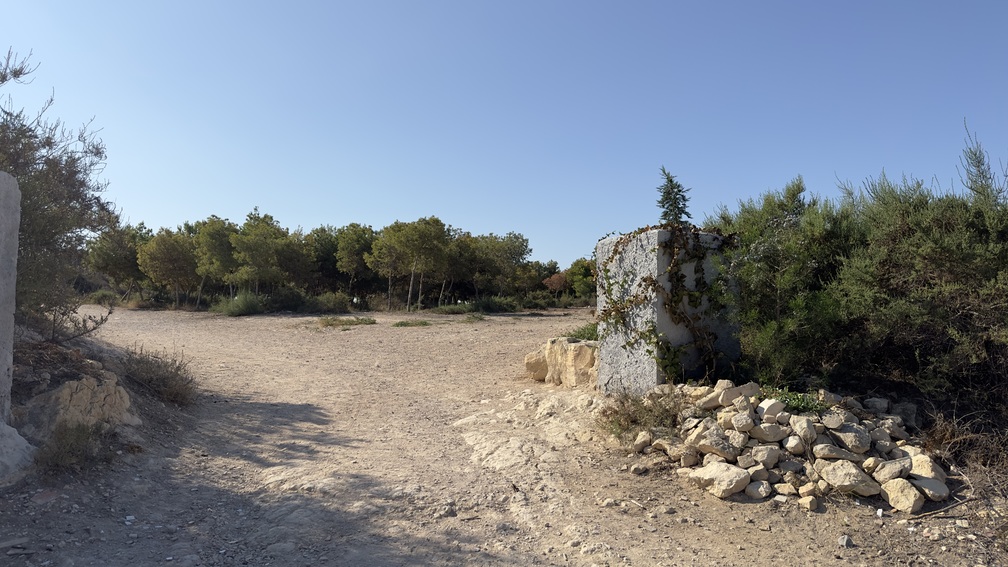
2. Landscape restoration area
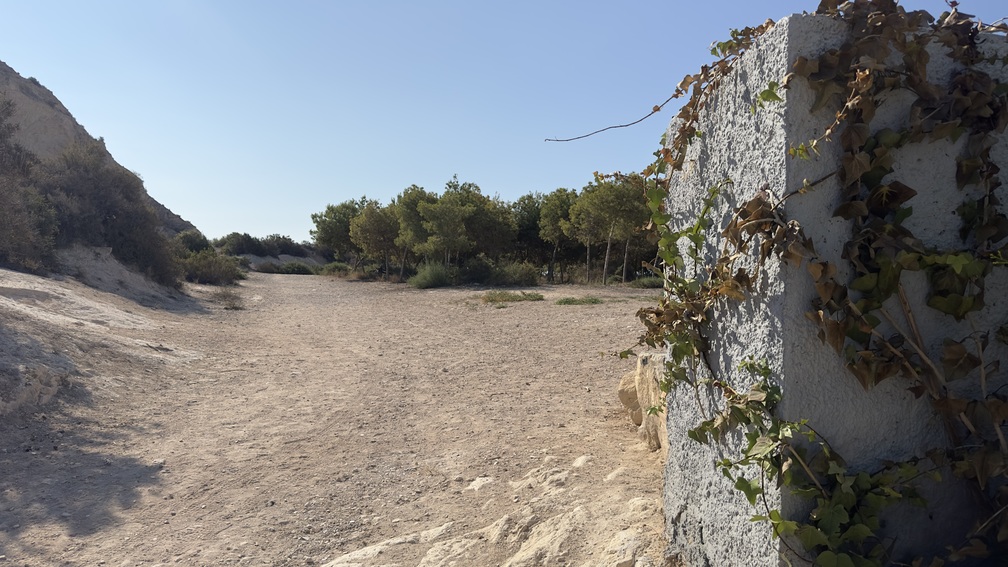
3. Path - Exotics
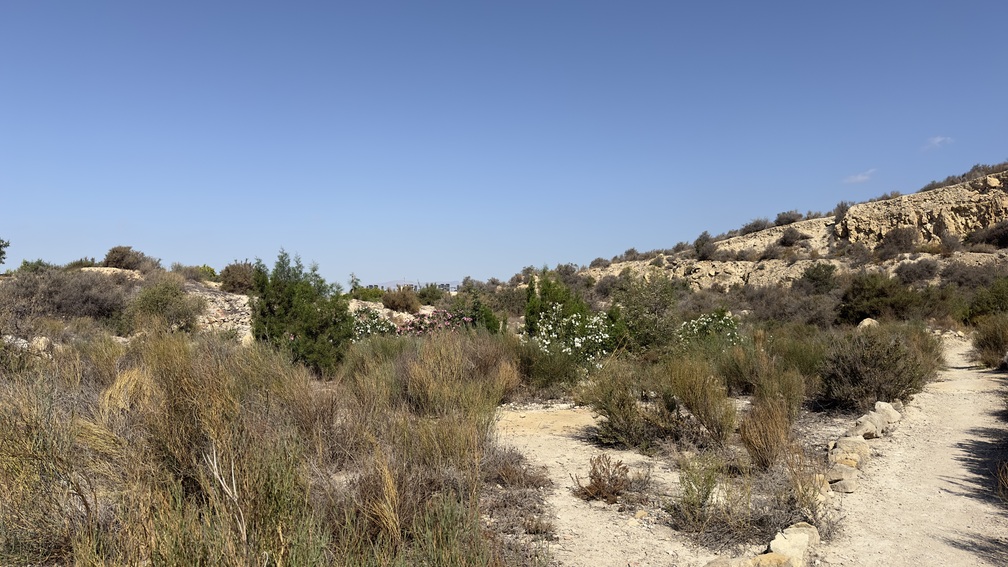
4. Main track link – Forest repopulation
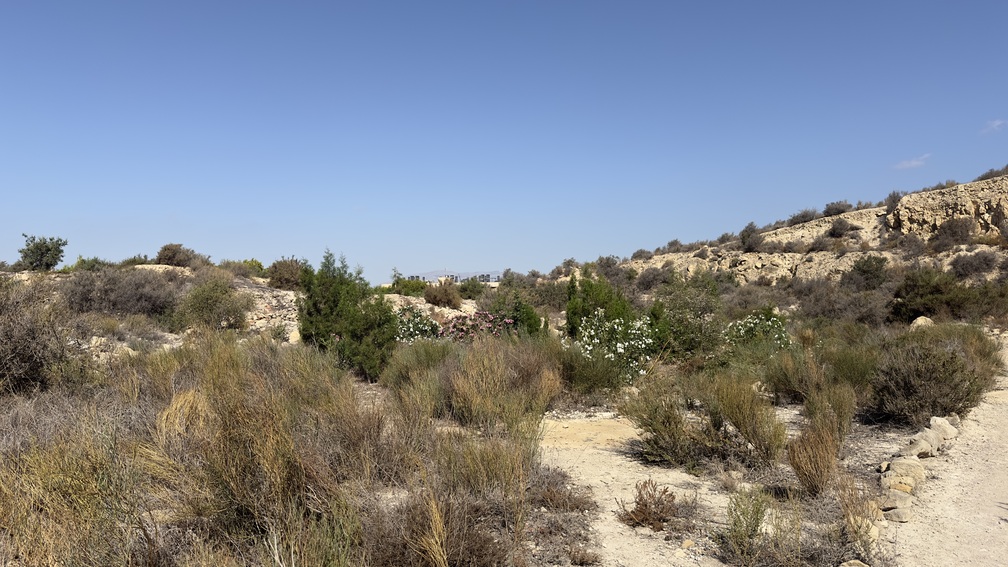
5. Pine forest – Underbrush
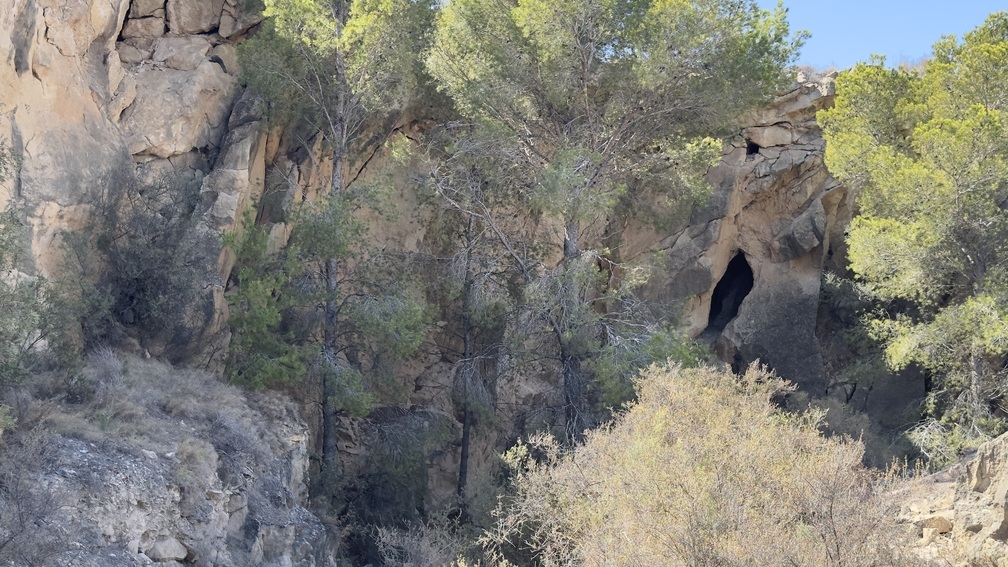
6. Rock shelter – Lichens
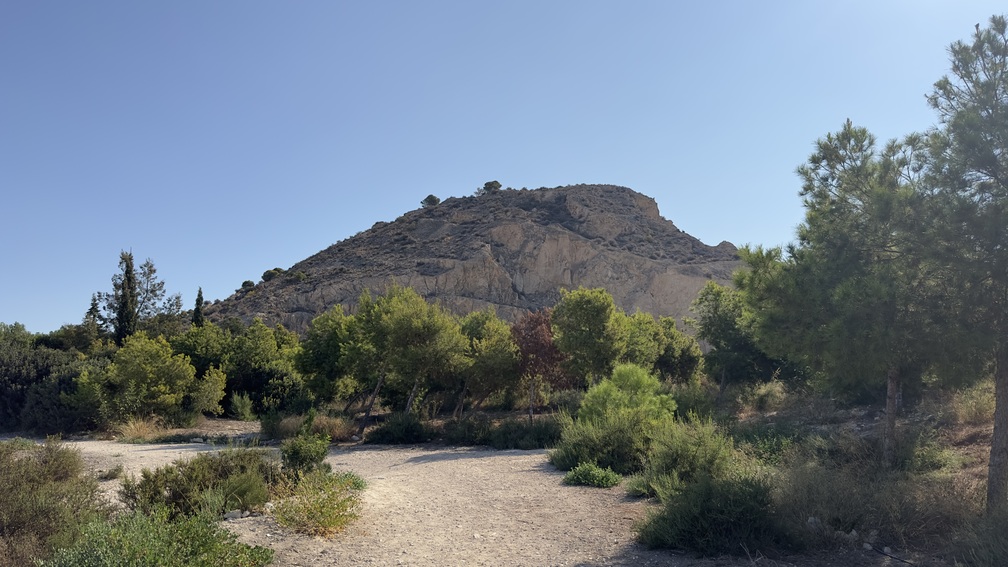
7. Landscape interpretation point
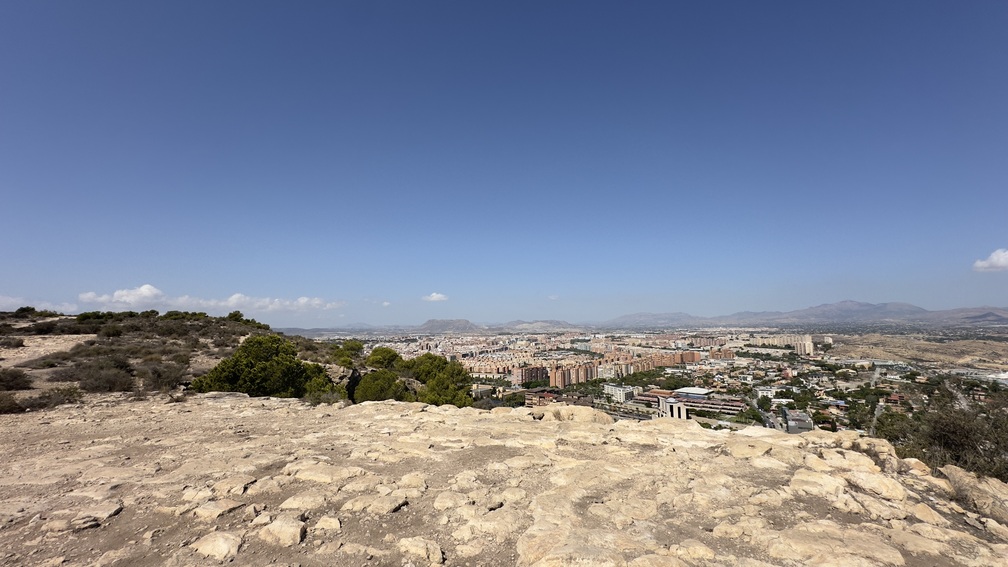
8. West view – Summit
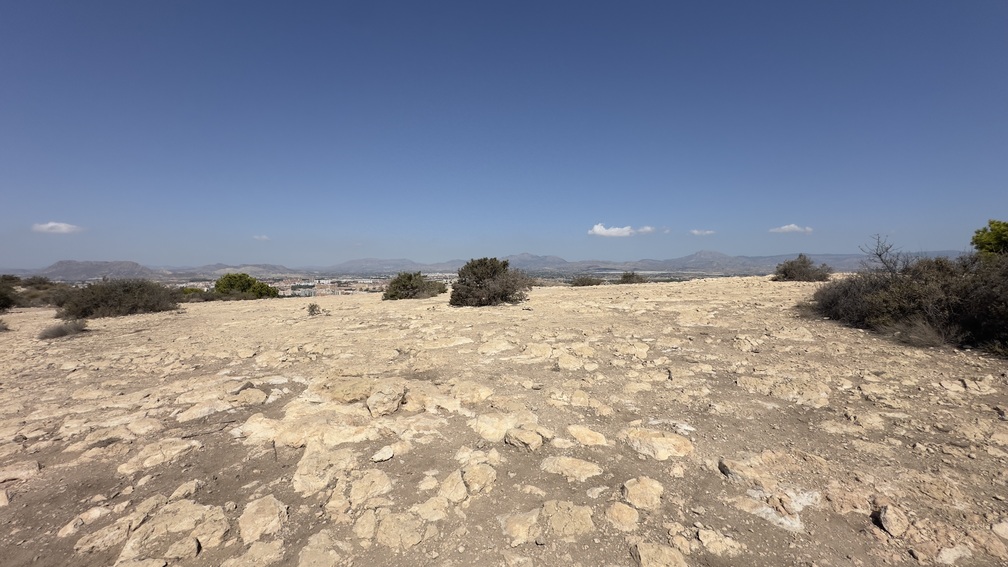
l9. Hill view
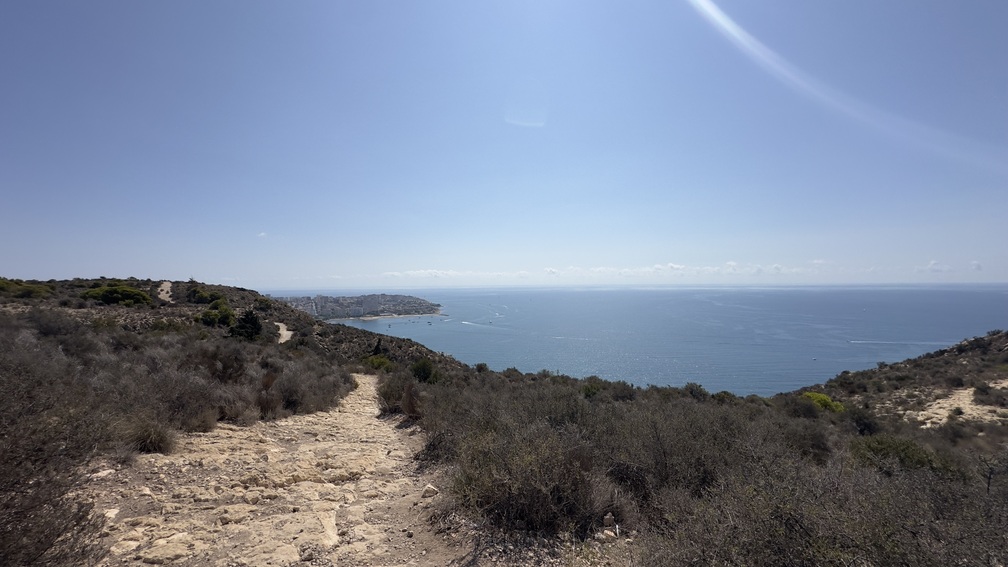
10. Coastal south viewpoint
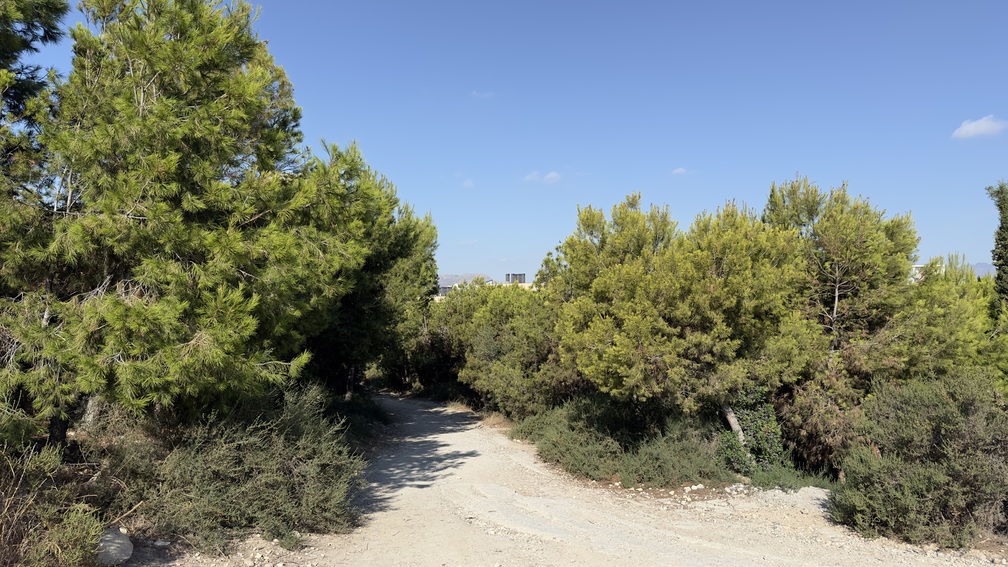
11. Pine forest - Bird watching
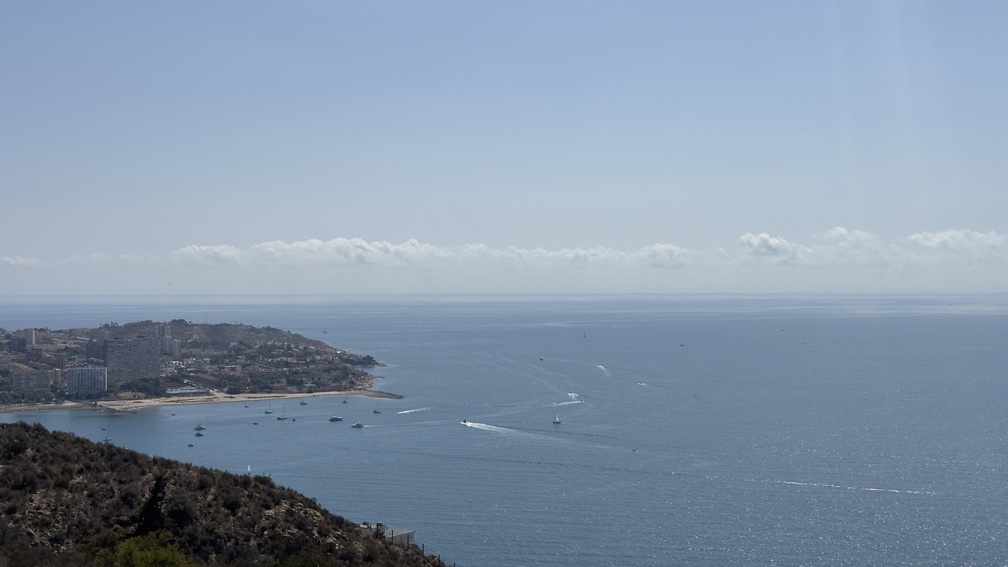
12. Coastal east viewpoint
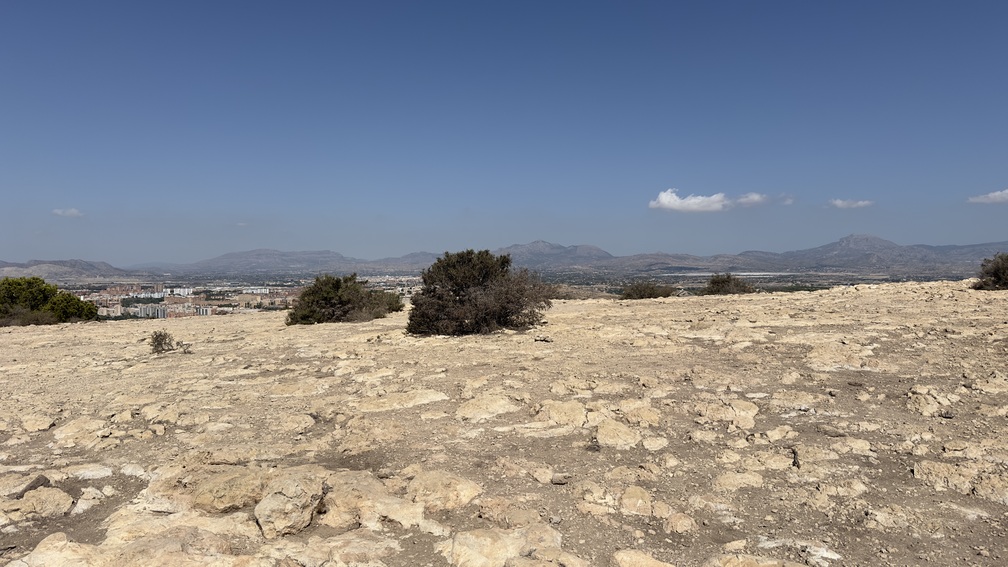
13. North access
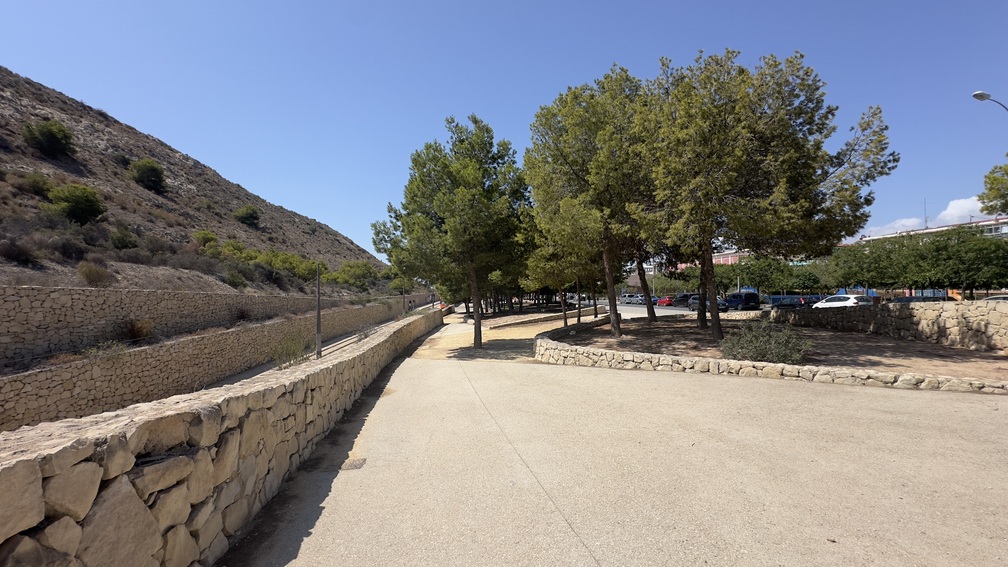
14. Bypass - Return
All Routes in Alicante
Services that might interest you
|
AGUITUR
Tourist guides accredited by the Valencian Agency of Tourism Tourist guides accredited by the Valencian Agency of Tourism |
|
ALACANT CIRCUIT
Tourist guides accredited by the Valencian Agency of Tourism Tourist guides accredited by the Valencian Agency of Tourism |
|
BLUEMED TOURS S.L
SICTED Badge The Exquisite Mediterranean CREATURISME VALENCIAN COMMUNITY CULTURAL CRATURISME VALENCIAN COMMUNITY WINE TOURISM CONVENTION BUREAU ALICANTE ALICANTE WINE ROUTE Tourist guides accredited by the Valencian Agency of Tourism Languages: English, Spanish, French, Valencian |
|
Esatur XXI, S.L.
Distintivo SICTED ISO 9001 ISO 14001 ISO 27001 Tourist guides accredited by the Valencian Agency of Tourism Tourist guides accredited by the Valencian Agency of Tourism Languages/ Languages: English, Español, Valencià |
|
FREE WALKING TOURS ALICANTE
Tourist guides accredited by the Valencian Agency of Tourism Tourist guides accredited by the Valencian Agency of Tourism |
|
OXYTOURS
Guías de Turismo acredidatos por la Agencia Valenciana de Turismo Tourist guides accredited by the Valencian Agency of Tourism |
|
TRAMUNTANA AVENTURA
Q Certificate for Tourist Quality Sicted Certificate Tourist Guides accredited by the Valencian Agency of Tourism Tourist guides accredited by the Valencian Agency of Tourism |
|
TURIGUIAS
SICTED Quality Certificate Tourist guides accredited by the Valencian Agency of Tourism Tourist guides accredited by the Valencian Agency of Tourism |
|
ULA Guides
SICTED Distinctive Tourist guides accredited by the Valencian Agency of Tourism Tourist guides accredited by the Valencian Agency of Tourism Languages/ Languages: Deutsch, English, Español, Français, Italiano, Valencià, others |
| Alicante By Bike & Rentals Tours |
| Bike Rent in Alicante |
| Blue Bike | Rental & Tour |
| Rent Point- Rent Bike Alicante |
| Bikes&City Alicante – Alquiler, rutas |
| BLUE BIKE ALICANTE |
| ESATUR |
| SEGWAY ALICANTE |
| SIS TOURS EVENTS |
| TRAMUNTANA AVENTURA |
| AKRAVIBE |
| AVENTURERO CATAMARÁN S.L |
| ALICANTE RACING QUADS RENT |
| ALIJETSET |
| AWANA |
| BLUE VALLEY |
| CENTRO BUCEO ALTAIR |
| CLUB DE SURF EL MORENO |
| EPICALBOATS |
| ENERGY ACTIVE CLUB |
| FANAUTIC CLUB ALICANTE |
| HIKINGALICANTE |
| LLOGA UN LLAÜT |
| MARINA JETS S.L |
| OXYTOURS |
| PARASAILING ALICANTE |
| SIS TOURS EVENTS |
| TERRENODEAVENTURA |
| TRAMUNTANA AVENTURA |
| ALICANTE RACING QUADS RENT |
| OXYTOURS |
| TRAMUNTANA AVENTURA |
* Important Notice
The Alicante Municipal Tourist Board is not responsible for any changes that may occur in the contact details, schedules, locations of accommodations, restaurants, tourist service companies, and transport, as well as in the cultural facilities of the city. It is recommended to verify the information in advance.

